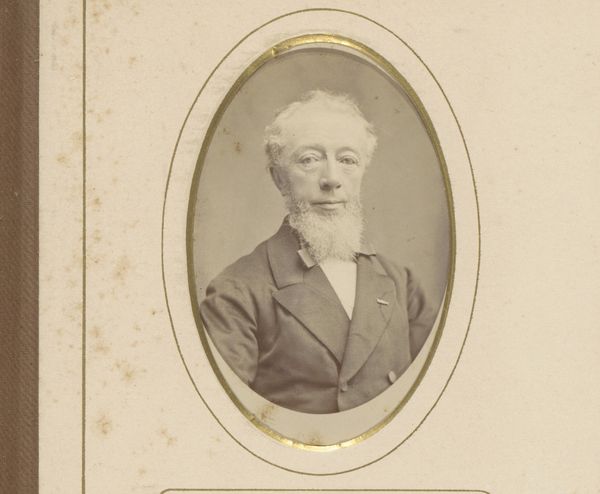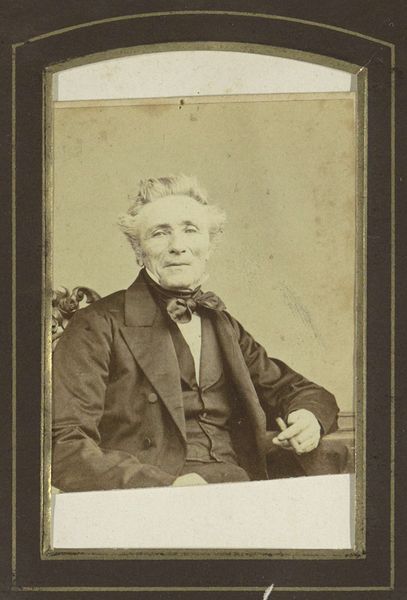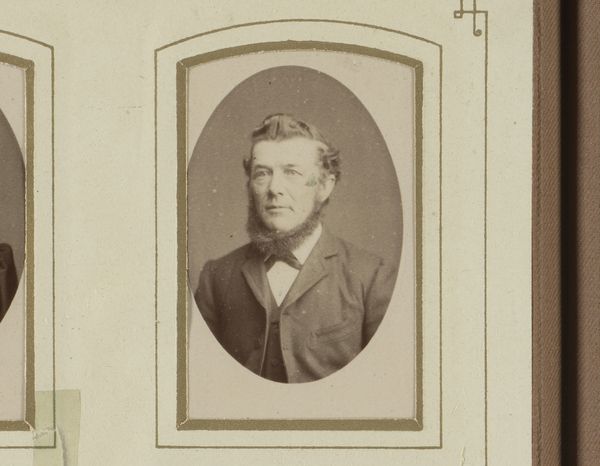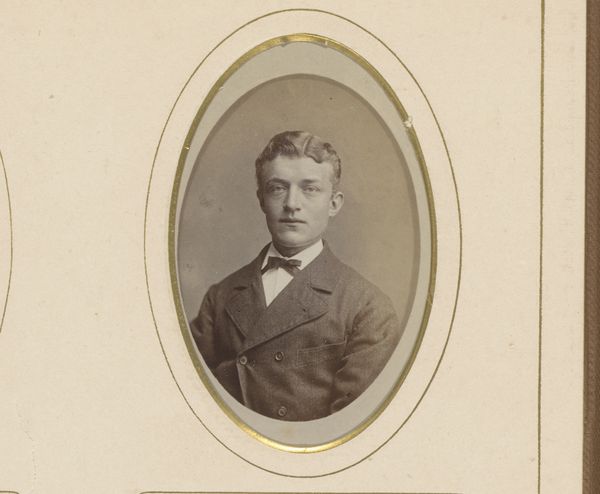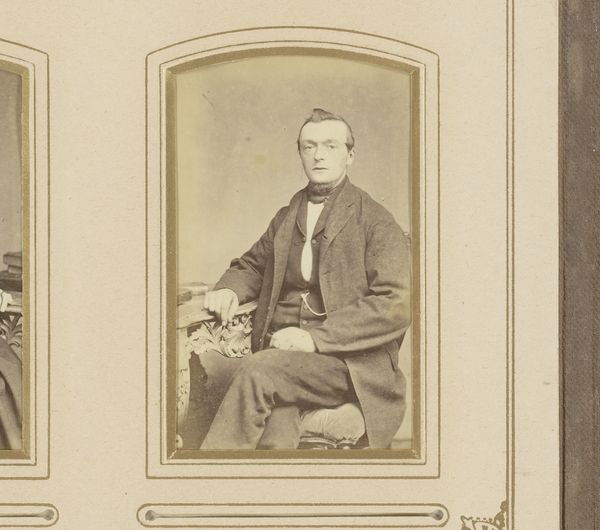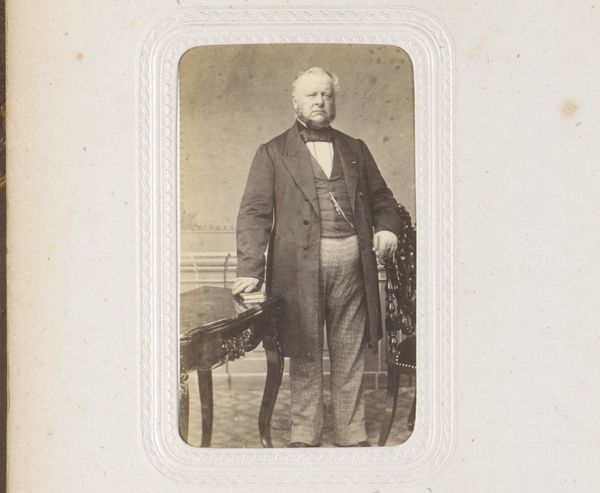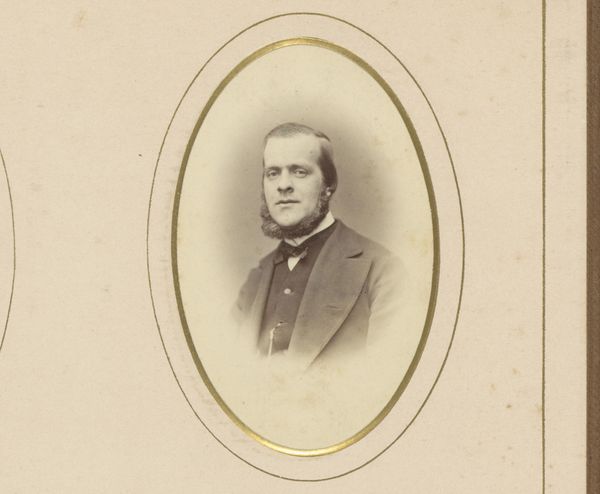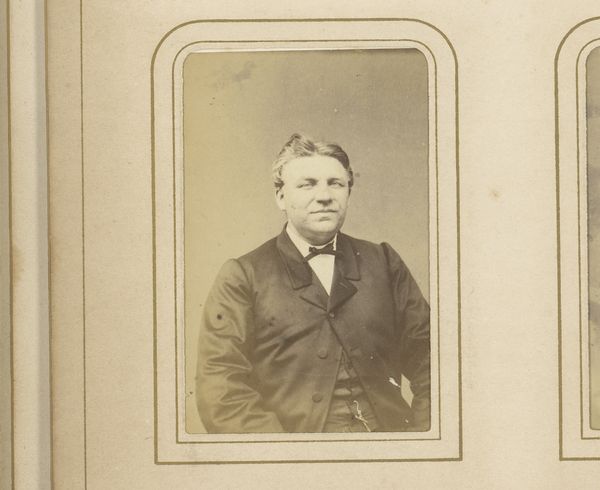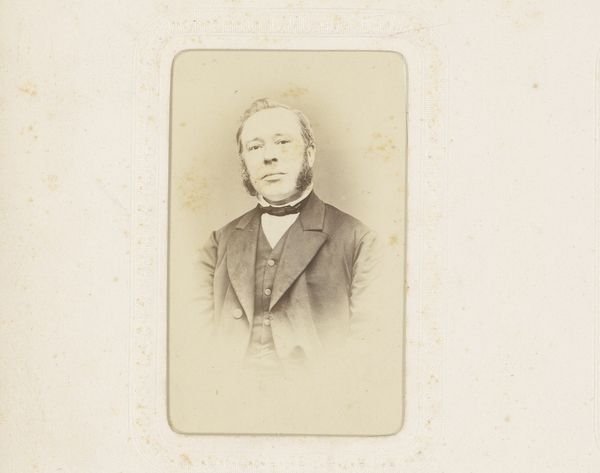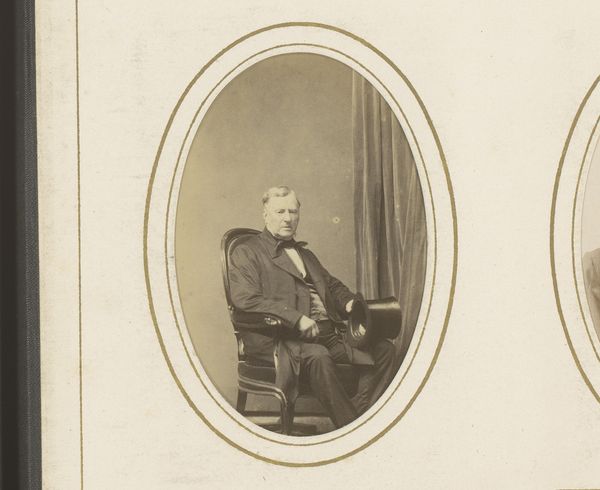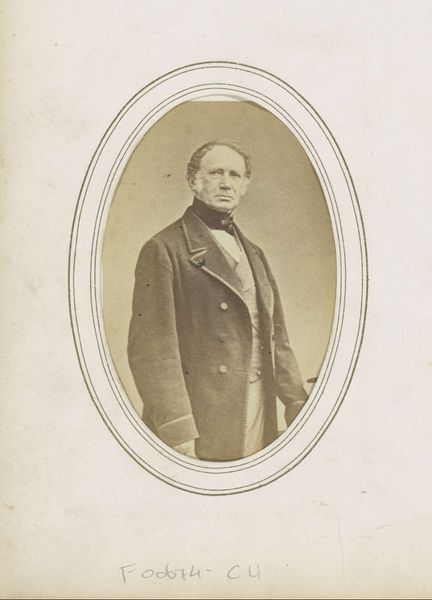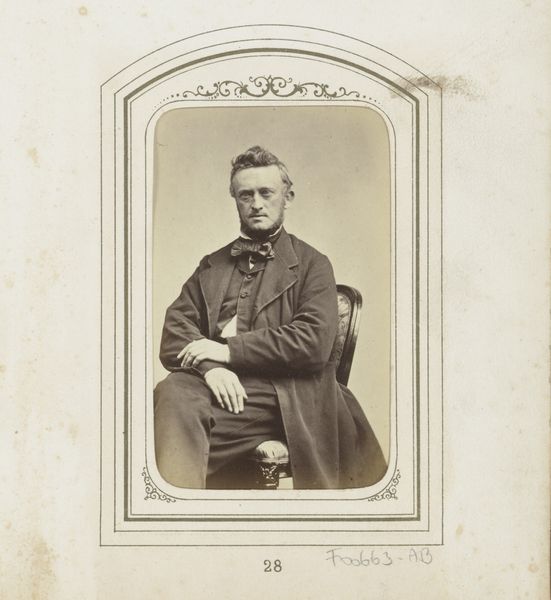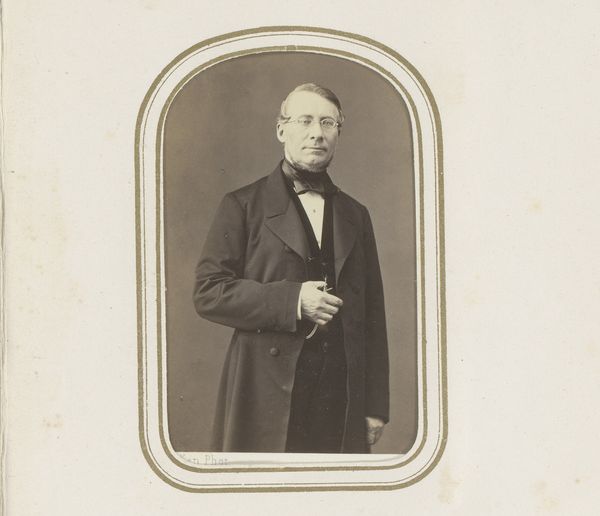
daguerreotype, photography
#
portrait
#
daguerreotype
#
photography
#
historical photography
#
19th century
Dimensions: height 83 mm, width 52 mm
Copyright: Rijks Museum: Open Domain
Curator: We're looking at "Portret van een man op een stoel," or "Portrait of a Man in a Chair," a daguerreotype created between 1862 and 1867 by Matthijs Adolph Conen. Editor: Instantly, it whispers to me of stillness, almost of waiting. The oval frame and sepia tones enhance this sense of suspended time, wouldn't you agree? He looks contemplative, even burdened, by the chair he's sitting on! Curator: Absolutely. Considering it's a daguerreotype, the process itself dictated stillness. Think about the elaborate chemistry and lengthy exposure times required. Every detail, from the texture of his jacket to the subtle light, results from meticulous and physically demanding labor. Editor: Which brings a different perspective, because the clothing is a little bit...sloppy? Makes you feel it's very real. Also, did people keep them in albums the way they keep stamps now? Curator: Well, it speaks volumes about the rise of photography as a democratized medium, enabling broader society to own portraits and challenging the elite’s exclusive access to painted portraiture. Think of it as a material precursor to today’s pervasive image culture, if you will. Editor: Perhaps, but there is still something intimate about it. His gaze seems fixed beyond us. I wonder about his story. About the world transforming outside the confines of that chair. He looks as though the chair may also become a part of him too if he sits long enough. Curator: The social function of photography during this time was also to solidify and visualize identities. Daguerreotypes captured aspirations of the bourgeoisie and upper middle class who are looking for increased societal participation. This object's preservation is another layer, becoming an important record and study document in its own right. Editor: Agreed. And despite its limitations in process, Conen's work achieves something profoundly evocative, no? I feel oddly touched. Curator: Seeing the portrait framed in its historical context— the process, materiality, and distribution— gives depth, though. The object takes on expanded significance and implications. Editor: A remarkable synthesis of technical execution, social symbolism, and personal presence. I leave with far more to contemplate than just a photograph of a man in a chair.
Comments
No comments
Be the first to comment and join the conversation on the ultimate creative platform.
